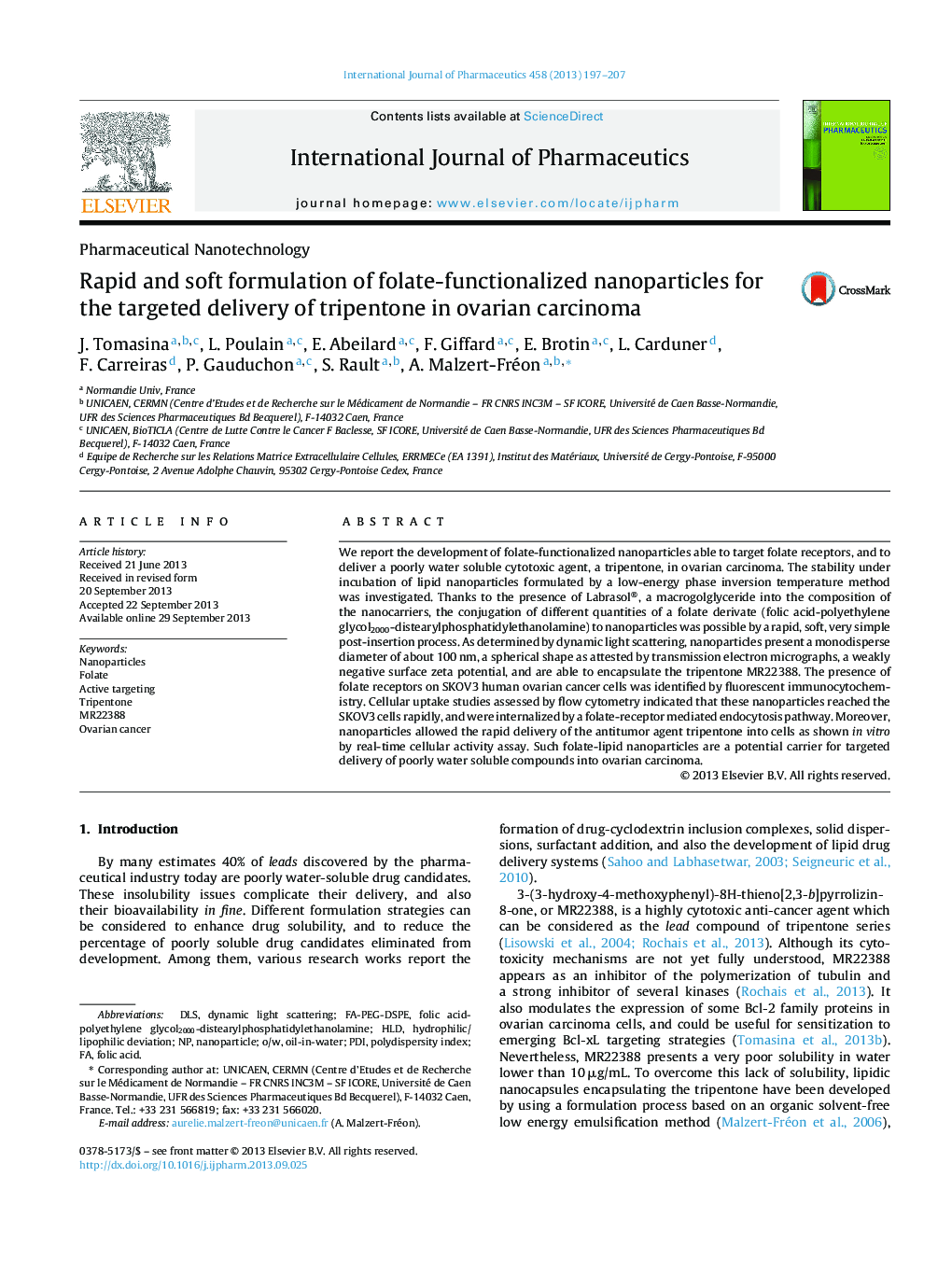| Article ID | Journal | Published Year | Pages | File Type |
|---|---|---|---|---|
| 2502075 | International Journal of Pharmaceutics | 2013 | 11 Pages |
Abstract
We report the development of folate-functionalized nanoparticles able to target folate receptors, and to deliver a poorly water soluble cytotoxic agent, a tripentone, in ovarian carcinoma. The stability under incubation of lipid nanoparticles formulated by a low-energy phase inversion temperature method was investigated. Thanks to the presence of Labrasol®, a macrogolglyceride into the composition of the nanocarriers, the conjugation of different quantities of a folate derivate (folic acid-polyethylene glycol2000-distearylphosphatidylethanolamine) to nanoparticles was possible by a rapid, soft, very simple post-insertion process. As determined by dynamic light scattering, nanoparticles present a monodisperse diameter of about 100Â nm, a spherical shape as attested by transmission electron micrographs, a weakly negative surface zeta potential, and are able to encapsulate the tripentone MR22388. The presence of folate receptors on SKOV3 human ovarian cancer cells was identified by fluorescent immunocytochemistry. Cellular uptake studies assessed by flow cytometry indicated that these nanoparticles reached the SKOV3 cells rapidly, and were internalized by a folate-receptor mediated endocytosis pathway. Moreover, nanoparticles allowed the rapid delivery of the antitumor agent tripentone into cells as shown in vitro by real-time cellular activity assay. Such folate-lipid nanoparticles are a potential carrier for targeted delivery of poorly water soluble compounds into ovarian carcinoma.
Keywords
Related Topics
Health Sciences
Pharmacology, Toxicology and Pharmaceutical Science
Pharmaceutical Science
Authors
J. Tomasina, L. Poulain, E. Abeilard, F. Giffard, E. Brotin, L. Carduner, F. Carreiras, P. Gauduchon, S. Rault, A. Malzert-Fréon,
